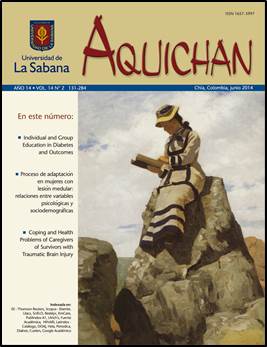Variables Associated with the Onset of Cigarette Smoking Among Adolescent Public Middle-School Students in Cartagena, Colombia
Keywords:
Tobacco use disorder, students, adolescent, nursing, tobacco productsAbstract
Objective: Determine the prevalence and the variables associated with the onset of cigarette smoking among vocational middle-school students in the city of Cartagena (Colombia). Materials and methods: This is a cross-sectional, observational analytic study of 1,100 public middle-schools students in Cartagena who were enrolled during 2012. The information was collected by means of a demographic fact sheet, the World Youth Tobacco Survey (Emta_Joven) inventory on cigarette consumption and attitudes towards smoking, the family Apgar scale, the Rosenberg self-esteem questionnaire, and Zung’s anxiety scale. Univariate, bivariate and multivariate statistical analyzes were done. Results: A total of 1,090 (10 were discarded be poorly filled out) students between the ages of 10 and 18 took part. The mean is 12.3; 565 of the students are male (51.8% and 525 are female (48.2%). Cigarette smoking at some point during their lifetime was associated with the ages between 13 and 18 (OR = 2.86; 95% CI 1.96 to 4.18), being male (OR = 2.40; 95% 1.63 to 3.56) and a high intention of substance use (cigarettes, alcohol and marijuana) (OR = 3.18; 95% CI 2.18 to 4.64). Conclusion: In the case of vocational middle-school students in Cartagena (Colombia), having smoked cigarettes at some point in their lifetime was associated with a high intention to use substances, being an adolescent and being a male.
Downloads
Published
How to Cite
Issue
Section
License
1. Proposed Policy for Journals That Offer Open Access
Authors who publish with this journal agree to the following terms:
- The journal and its papers are published with the Creative Commons License Attribution-NonCommercial-NoDerivatives 4.0 International (CC BY-NC-ND 4.0). You are free to share copy and redistribute the material in any medium or format if you: give appropriate credit, provide a link to the license, and indicate if changes were made; don’t use our material for commercial purposes; don’t remix, transform, or build upon the material.





